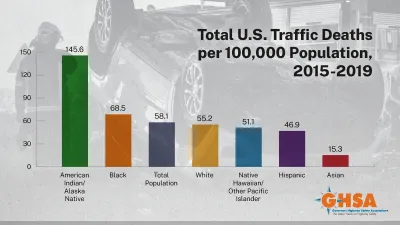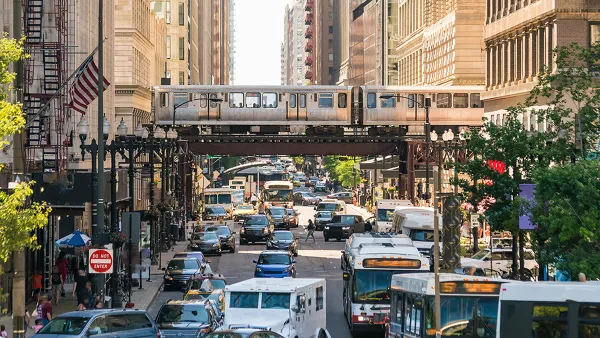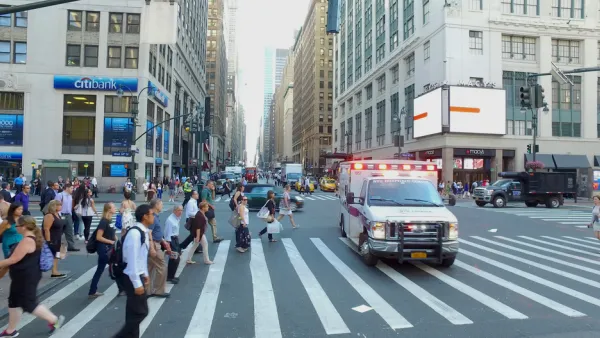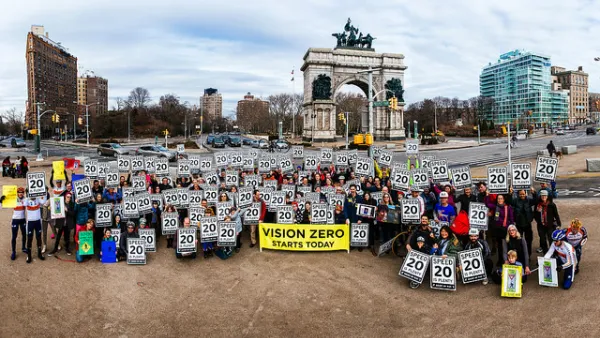Two new reports confirm the racial disparities of traffic violence in the United States, revealing more proof about who stayed home during the pandemic, and who was forced to navigate the risks of the pandemic in public.

We already know that U.S. traffic deaths soared during the pandemic, despite fewer people driving fewer miles. Now a new report adds another layer onto the tragic figures: Black Americans accounted for a disproportionate impact of traffic fatalities during the pandemic.
Reporting for CNN, Matt McFarland broke the news about a report published on June 3, 2021 by the U.S. Department of Transportation's National Highway Traffic Safety Administration.
The National Highway Traffic Safety Administration estimated earlier this month that 38,680 people died in motor vehicle crashes in 2020, the largest projected number of deaths since 2007, despite a 13.2% decrease in miles traveled from the prior year. When broken down along racial lines, white pedestrian deaths grew 4%, American Indian fatalities grew 11%, and Asian and Pacific Islander deaths declined 29%.
But NHTSA found the largest increase in deaths — 23% — among Black people in what appears to be a stark illustration of which populations could and could not afford to stay home throughout the pandemic.
The increased traffic fatalities among Black Americans during the pandemic continued a trend that predates the arrival of the novel coronavirus to the United States. Traffic deaths for Black Americans rose 16 percent from 2005 to 2019. During the same period, traffic deaths for white people fell 27.8 percent.
More data on the racial disparities in U.S. traffic fatalities can be found in a separate report by the Governors Highway Safety Association titled "An Analysis of Traffic Fatalities by Race and Ethnicity," published on June 22, 2021.
News of both studies gained traction around the national news media, including articles for The Washington Post and NBC News.
FULL STORY: Traffic deaths jump for Black Americans who couldn't afford to stay home during Covid

National Parks Layoffs Will Cause Communities to Lose Billions
Thousands of essential park workers were laid off this week, just before the busy spring break season.

Retro-silient?: America’s First “Eco-burb,” The Woodlands Turns 50
A master-planned community north of Houston offers lessons on green infrastructure and resilient design, but falls short of its founder’s lofty affordability and walkability goals.

Delivering for America Plan Will Downgrade Mail Service in at Least 49.5 Percent of Zip Codes
Republican and Democrat lawmakers criticize the plan for its disproportionate negative impact on rural communities.

Test News Post 1
This is a summary

Test News Headline 46
Test for the image on the front page.

Balancing Bombs and Butterflies: How the National Guard Protects a Rare Species
The National Guard at Fort Indiantown Gap uses GIS technology and land management strategies to balance military training with conservation efforts, ensuring the survival of the rare eastern regal fritillary butterfly.
Urban Design for Planners 1: Software Tools
This six-course series explores essential urban design concepts using open source software and equips planners with the tools they need to participate fully in the urban design process.
Planning for Universal Design
Learn the tools for implementing Universal Design in planning regulations.
EMC Planning Group, Inc.
Planetizen
Planetizen
Mpact (formerly Rail~Volution)
Great Falls Development Authority, Inc.
HUDs Office of Policy Development and Research
NYU Wagner Graduate School of Public Service





























